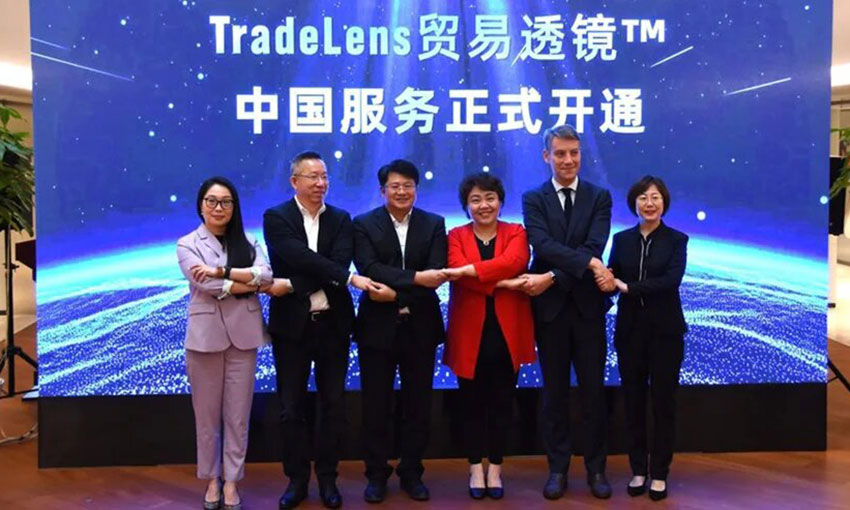TRADELENS is now operational on the Chinese mainland, with 10 members joining in the country since its launch on 10 May.
The new members of the blockchain-based trade platform include two port groups and eight intermodal and inland logistics providers.
TradeLens is a neutral blockchain-enabled digital container logistics platform, jointly developed by A.P. Moller – Maersk and IBM, and includes foundational carriers CMA CGM and MSC.
China Unicom Digital Tech hosts and operates TradeLens on the Chinese mainland, making it available to global and domestic exporters and importers in China.
The TradeLens platform is built by the industry and for the industry and is designed to modernise trade in several dimensions. The company says is customers gain access to end-to-end container transportation visibility, can collaborate with their logistics and trading partners including sharing documents on blockchain, and gain a comprehensive picture of the flow of goods.
Sany Heavy Industry logistics manager Dong Huang said, “As a customer of TradeLens, we admire the innovation and commitment to digitalization of logistics. At Sany we are excited with the prospect of more industry leading cutting-edge technology”.
Xiamen Port Holding Group vice-general manager Zhaohui Chen said connecting to the TradeLens platform is an important opportunity for Xiamen Port to expand its information service capabilities.
“Ports play pivotal role in area logistics,” he said.
“By integrating with TradeLens, it will allow us to improve operational efficiency and empower each other to support supply chain participants domestically and abroad to enhance the control of logistics dynamics. We will make our efforts to facilitate a smooth industrial and supply chain flow,”
Fintech company RootAnt Global’s CEO Lincoln Yin said TradeLens may help to improve efficiency, mitigate fraud and drive green financing, as well as promote economic inclusion in global finance especially for small and medium enterprises.
“As a Fintech serving the ecosystem, we look forward to pushing adoption of digital bills of lading together, filling the gap between enterprise value chains and financial institutions with faster, cheaper, easier financial services and lower risk,” he said.

